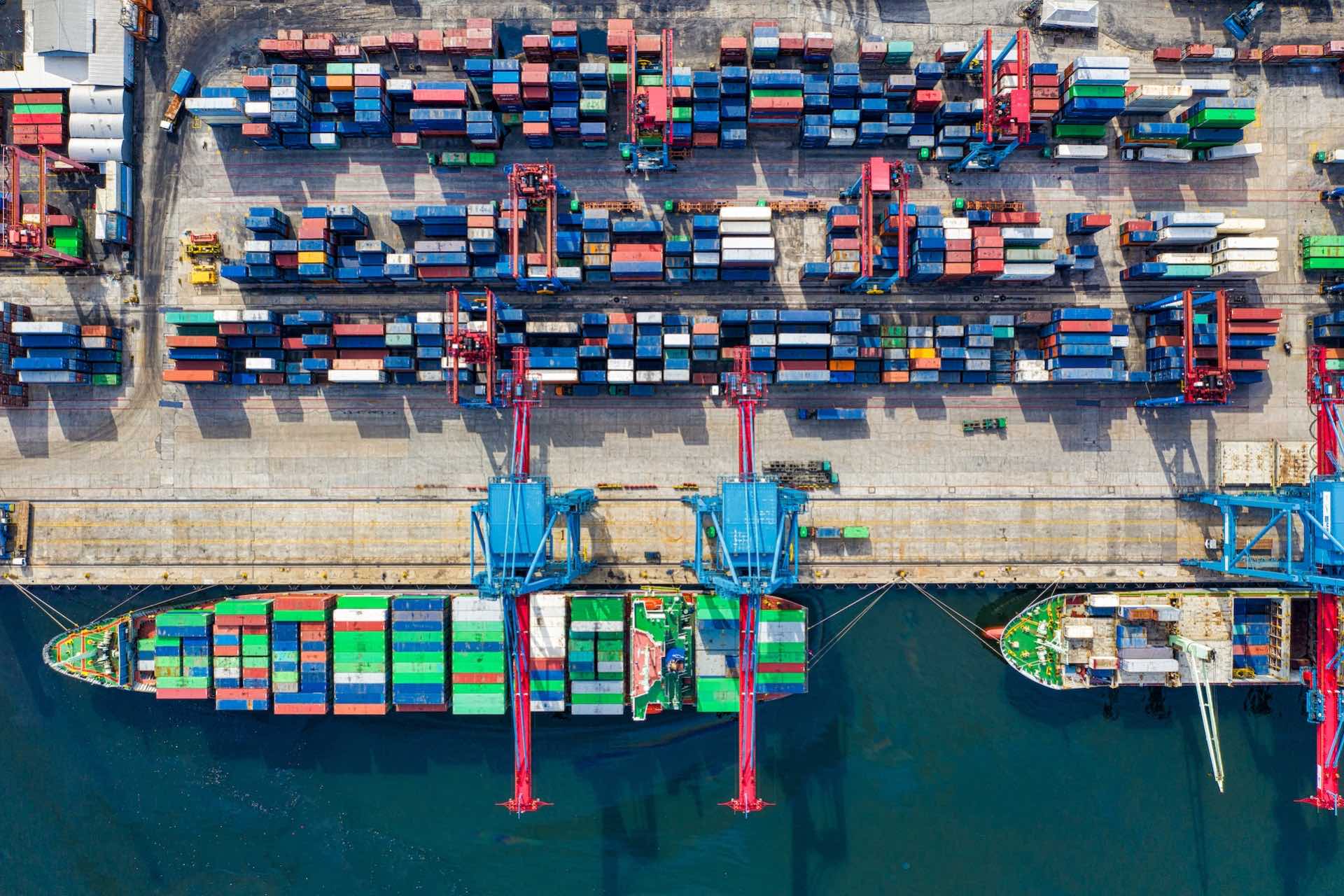It’s time to seriously engage with Scope 3 emissions. These are the emissions not directly generated by your business, but caused by activities relating to that business. For example, while the tailpipe emissions from your own fleet of lorries would be Scope 1, the emissions from a third-party distribution company you use would come under Scope 3.
Most modern businesses are part of a complex value chain, using other businesses to supply raw materials, handle waste management, provide transport logistics and so on. For this reason, most businesses find that well over 80% of their emissions fall into Scope 3.
Scope 3 emissions, also known as value chain emissions, are the trickiest to tackle because they come from sources beyond the direct control of your business. But ignoring them is not an option. Many carbon reporting standards make it mandatory to include Scope 3, including the Science-Based Targets initiative (SBTi) and the International Sustainability Standards Board (ISSB). It is still currently voluntary under SECR, but strongly encouraged. The reality is that any credible net zero strategy has to take Scope 3 into consideration.
When working out how to include Scope 3, it’s worth checking out the net zero guidelines from the ISO (published November 2022). Here are 10 of the actions the ISO suggests you can take to reduce the Scope 3 emissions of your business.
-
Developing products and services that contribute to the emergence of alternative value chains
The decisions you make about your own business help to shape what is possible for the other businesses you work with. When you choose to pay more for more sustainable waste management, you are sending a market signal that supports this way of working. When you develop low-emission processes, products or packaging, you are giving other businesses new options to cut the emissions in their value chain.
-
Redesigning and developing products and services to reduce their life cycle emissions
Reducing the life cycle emissions of your products and services is good in itself because of the climate impact, but it often brings a competitive advantage too. Consumers are increasingly concerned about the environmental impact of what they buy and companies are under growing pressure to be more transparent about this. Lower-emission products may also end up being cheaper to produce.
-
Promoting, supporting and facilitating the circular economy (e.g. reuse, repair, refurbishment, repurposing, recycling)
Studies have shown that implementing circular economy practices could boost Europe’s resource productivity by 3% by 2030 and generate up to £522 billion a year in savings. It also helps to support business resiliency, job creation, and economic growth, along with a slew of environmental benefits like reducing waste and GHG emissions.
-
Requiring suppliers to commit to net zero targets, in line with the ISO recommendations
One of the most powerful tools you have for reducing emissions in your organisation’s value chain is your spending power. This is why organisations that take net zero seriously are increasingly requiring their suppliers to do the same. For example, NHS England factors emissions into its procurement choices and in February 2023 set out a roadmap to guide suppliers into aligning with its net zero ambitions. Supermarket giant Tesco has committed to a net zero supply chain by 2050 and is supporting all suppliers to set out their own net zero targets.
-
Prioritising suppliers based on their climate strategy, past performance and transparency of emission data
One of the biggest challenges in taking control of Scope 3 emissions is a lack of visibility. A 2022 Accenture report found that “Scope 3 emission hot spots” are particularly likely to happen in the downstream supply chain in connection with sourcing raw materials. But lack of oversight is an issue in all parts of the value chain. Again, your organisation can leverage its buying power by developing a robust procurement strategy that requires partners to be transparent on their emissions.
-
Collaborating with other organisations and industry partners to strengthen and align procurement and purchase requirements
Scope 3 emissions arise from the necessity of working with other organisations to carry out your core business – so they can’t be tackled without an equal or greater amount of collaboration. Mike Barry, former director of sustainable business at Marks & Spencer, puts it this way: “When you were reducing your carbon footprint by 3 per cent a year or reducing plastic use by 2 per cent a year, you could do it on your own. But now with net-zero goals, we need to fundamentally rebuild value chains. You have to find a fundamentally different way of sourcing those raw materials, manufacturing them, using them as products and selling them. No business can do that on its own.”
-
Collaborating with other organisations and the value chain to accelerate adoption of clean energy
Energy accounts for more than two-thirds of the world’s greenhouse gas emissions. To reach net zero, it is essential that we decarbonise the world’s energy supply. But global emissions from energy combustion actually grew in 2022.
As an energy user, particularly if your business is a high-volume consumer, your purchasing decisions can do a lot to support the UK plan to decarbonise our power system by 2035. Purchased energy comes under Scope 2, not Scope 3, but your decisions in this area also impact your Scope 3 emissions because suppliers and generators are always part of a bigger value chain. The ISO guidance is clear that your energy buying should support the generation of new renewables. This means avoiding reliance on renewable certificates of origin, or REGOS. You may choose to take out a corporate power purchase agreement (CPPA), invest in your own generation assets or simply sign a new supplier contract. Best practice for both Scope 2 and Scope 3 means doing your research into how your choices will impact the development of new renewables infrastructure.
-
Investing in GHG emissions reduction and removals projects
In the 2022 Autumn Statement, the UK government announced it will be investing a further £6 billion into renewable energy and low-carbon technology. Many large businesses are also investing in technological ways to absorb existing emissions. For example, Microsoft is investing in a mix of technologies from biochar to less proven technologies like direct air capture.
The reason why these investments tend to be spread over a mix of technologies is that many of them may not achieve the scale of carbon removals we need. Even traditional offsetting solutions like planting trees are not a straightforward path to net zero. The integrity of the offset market has recently been called into question and the ISO guidance makes it clear that using offsets requires doing a lot of legwork to ensure they are valid. At worst they could have the counterproductive effect of actually increasing emissions elsewhere. For most businesses, it makes more sense to invest in equipment or new processes that will reduce your absolute emissions.
-
Ensuring financial investments, including assets and pension funds, are aligned with climate strategy and net zero commitments
Investment is a key driver for net zero. The choices your business makes about allocating its money could be its most important area of leverage for reducing its Scope 3 emissions. New rules such as the TCFD reporting requirements and the Sustainability Disclosure Requirements make it mandatory for larger businesses to be transparent about their climate impact. This should make it easier for your business to reduce its Scope 3 emissions through greener investment choices.
-
Prioritising low-carbon travel and reducing the need for personal transportation through urban planning
The modes of transport used by your workers and customers count as part of your Scope 3 emissions, but most businesses have yet to seriously engage on this. There is a raft of evidence on the business benefits of active travel: employees who walk or cycle to work are more productive, while customers who cycle to the shops tend to spend more. Providing secure cycle parking is one very easy Scope 3 win. You could go further by offering incentives to people who reach your site without a private car, such as a free coffee on production of a bus ticket.
As a large business you may also have influence on local planning decisions, so use it to call for safe active travel infrastructure and better public transport. As with all sources of your Scope 3 emissions, you may have a lot more power than you think.












